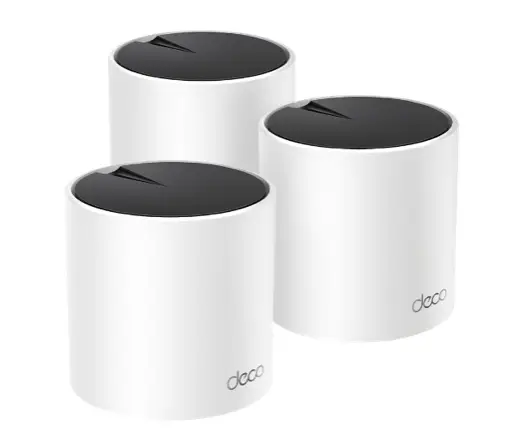What is a Mesh WiFi Network?
Have you heard the term “Mesh WiFi“? I had but didn’t truly understand why I needed one. However, my Gig Internet speed was not coming through on my WiFi. Now granted, I was trying to get it to the apartment across the driveway from the house. It was a direct line of sight and less than 80 feet away. My faulty assumption is that would have been enough.
Understanding the Difference Between 5g and 2.4g WiFi Signals
In general, a 5GHz Wi-Fi signal has a shorter range than a 2.4GHz Wi-Fi signal. The reason for this is that higher-frequency signals have more difficulty passing through solid objects and walls, so they lose strength more quickly as they travel through the air.
A 2.4GHz Wi-Fi signal can typically reach up to 150 feet indoors and up to 300 feet outdoors under ideal conditions, while a 5GHz Wi-Fi signal has a shorter range, typically up to 50-100 feet indoors and up to 200 feet outdoors under ideal conditions.
However, it’s important to note that the actual range of both types of signals can vary depending on many factors such as the type of wireless router or access point, the power of the transmitter, the presence of obstacles, interference from other devices or networks, and other environmental factors.
In summary, while a 5GHz Wi-Fi signal has a shorter range than a 2.4GHz Wi-Fi signal, it can provide faster speeds and more reliable performance in areas with high network congestion or interference, making it a good choice for use in densely populated areas, such as apartment buildings, college dorms, or urban environments.
Understanding The Difference Between a Mesh and Regular WiFi Network?
A MESH WiFi network is a type of wireless network that uses multiple interconnected access points (APs) to extend wireless coverage and improve the overall network performance. The access points are placed strategically throughout the home or office and communicate with each other to form a single network with a single SSID (network name) and password.
The main difference between a MESH WiFi network and a regular WiFi network is the way the signal is distributed throughout the space. In a traditional WiFi network, a single wireless router broadcasts the signal throughout the space. However, this approach can result in weak signals, dead zones, and slow speeds in certain areas of the space, especially if the space is large or has many obstacles.
A MESH WiFi network solves these problems by using multiple access points to create a more robust and reliable network. Each access point in a MESH network is connected to the others, forming a self-organizing network that can adapt to changes in the environment and ensure a strong and reliable signal in every corner of the space.
Research Brought Me to The TP-Link Deco
One of the other features that MESH WiFi will provide, is the ability to move through your home with continuous coverage. The multiple access points actively transfer your signal and connection to the most optimal spot. While some devices are stationary, like your desktop or smart TV, your cell phone, table or laptop may be moving around. Here is a brief list of the features I was looking for and ultimately found in the TP-Link Deco system:
- Easy Set Up with Good App Control
- Guest Network
- Remote Network Control and Admin
- Device Prioritization
- Security
- WiFi 6
All of this came in a nice, complete package with the Deco AXE5400. I choose this model with three units for the coverage area, up to 7,200 square feet. My home is not that large, not even close. However, it is an old farmhouse with plaster walls, and plaster walls can really stop WiFi signals. With 3 units, I have the flexibility of placing and strengthening my household coverage.
.
For homes up to 5,000 sq ft, the two-unit system is a great option and a little less expensive.
Conclusion: Fast, Reliable WiFi Signal is Critical in The Remote Working World. Invest In A Good System
You should consider switching to a MESH WiFi network if you are experiencing poor WiFi coverage, dead zones, or slow speeds in certain areas of your home or office. A MESH network can also be beneficial if you have a large space, multiple floors, or many obstacles that can interfere with the WiFi signal. Additionally, if you have many devices connected to your WiFi network, a MESH network can help to distribute the load more evenly and improve the overall performance of your network.

